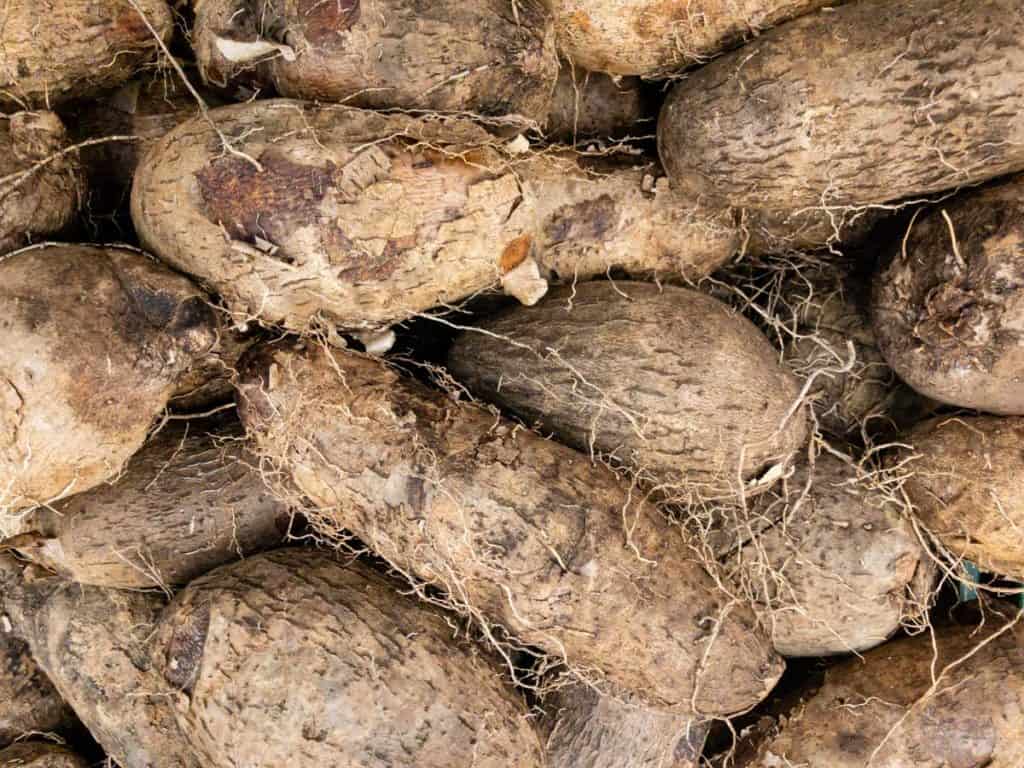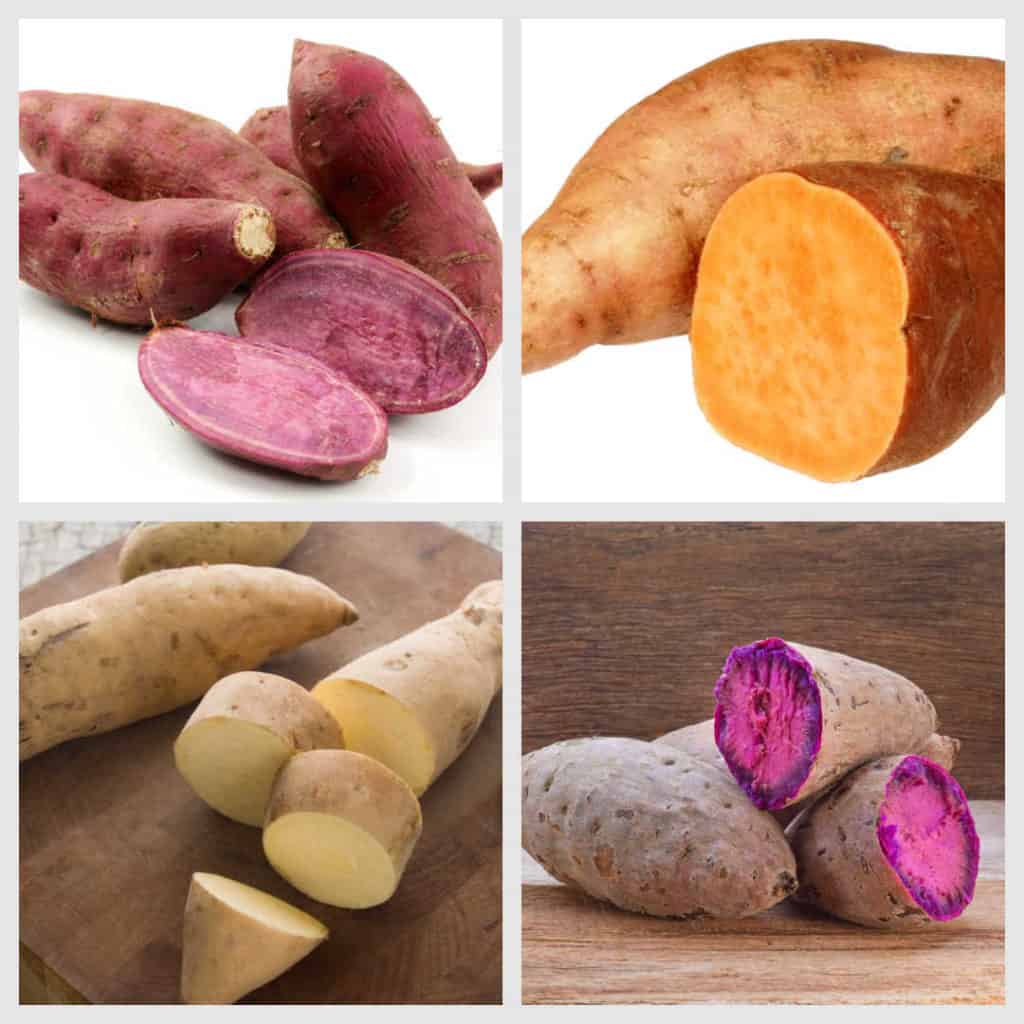Sweet Potato vs Yam
For years, we’ve been arguing over the pronunciation of the plain ol’ potato. But, there is a bigger discussion at hand in root vegetable world – what’s the difference between a sweet potato and a yam? There’s been a lot of confusion perhaps due to how they’re used, how they’ve been marketed and where they come from. As it turns out, the yam and the sweet potato couldn’t be any more different. Let’s get to the root of the matter.
Types of Sweet Potatoes
To start, a sweet potato is an underground tuber vegetable in the morning glory family. There are actually hundreds of different varieties of sweet potatoes around the world! They vary in terms of skin color (orange, red, yellow, purple), flesh color (orange, white, purple), flavor (sweetness) and texture (creamy and moist vs. dry and starchy).
Here are some of the more common varieties of sweet potatoes:
- Beauregard, Envy, Garnet and Jewel – all of these potatoes have orange or red skin, orange or reddish flesh, and when cooked are sweet, creamy and moist.
- Purple, Speckled Purple, Stokes Purple and Sweet Hannah – these potatoes have yellow/tan or purple skin, and a dry and starchy texture.
Yam vs Sweet Potato: What is a Yam?
Yams and sweet potatoes are only distantly related. While both are classified as underground tuber vegetables, sweet potatoes are in the morning glory family, versus yams which are in the lily family. True “yams” have a thick, scaly, brown skin with very dry, starchy white flesh and are not as sweet. Commonly found in Africa, Asia and the Caribbean, true yams have limited availability in the U.S.

Sweet Potatoes vs Yams: Why are some sweet potatoes called yams in the U.S.?
Sweet potatoes grown in America were originally firm and white-fleshed. Fast forward to the 1930s, when softer, orange-fleshed sweet potatoes came on the US market. In order to differentiate between the two types, producers and shippers adopted the African name “yam” for the sweeter variety – and the name has remained in place to this day.
How to pick the right sweet potato
As mentioned earlier in this post, there are hundreds of different varieties of sweet potatoes. They vary in terms of skin color (orange, red, yellow, purple), flesh color (orange, white, purple), flavor (sweetness) and texture (creamy and moist vs. dry and starchy). So, how to know which one to pick? Think about what you want the flavor and texture of the cooked potato to be, or the type of dish you’re making, and then follow this easy guide:
- For casseroles and baking, opt for sweet and moist potatoes: orange or red skin and dark orange or reddish flesh (like Red Garnet, Jewel or Beauregard).

- For French fries, roasted and/or mashed potatoes, opt for dry and starchy sweet potatoes: yellow or purple skin (like Purple or Sweet Hannah).

No matter which variety you select, choose potatoes that have a smooth skin with no blemishes, soft spots or sprouts. Also, smaller potatoes tend to be sweeter and moister than lager ones.
How to store Sweet Potatoes
Store fresh (uncooked), unpeeled sweet potatoes in a dark, dry, well ventilated place. I keep them in a basket in my pantry. Don’t put them in the refrigerator; it can give them a bad taste, and also cause them to actually spoil faster.
Cooked sweet potatoes can be cooled, placed in an airtight container (a freezer ziptop baggie works well) and refrigerated for 3 to 5 days, or frozen for up to 1 year.
How long do sweet potatoes last?
Fresh (uncooked), unpeeled sweet potatoes stored in a dark, dry place will last for around 1 month, possibly longer. Cooked sweet potatoes stored in an airtight container will last 3 to 5 days refrigerated, or up to 1 year frozen.
How can you tell if a sweet potato has gone bad?
First, smell it – a sweet potato will have a funky odor if it’s gone bad. Also, if the skin looks discolored (black) or if the potato is mushy on the ends, it’s past its prime and won’t taste good.
FAQs – Difference between Yam and Sweet Potato
All varieties of sweet potatoes are a healthy source of dietary fiber, antioxidants, are low in calories (1 whole cooked potato = around 103 calories), with no fat or cholesterol. One key difference among varieties is that purple-fleshed potatoes have the highest amount of anthocyanin antioxidants. While the jury is still out on the positive impacts of anthocyanins, research is indicating numerous positive benefits, including protecting against everything from obesity and diabetes, to cardiovascular disease and cancer. (Source: www.livestrong.com)






Based on your description, I have never seen a yam in our local grocery store. I have, however, seen sweet potatoes labeled as yams. Thanks for the clarification…this was definitely interesting! Posting to my Facebook page later today.
You can also found yams most in the tropical region n esp in africa too…. Yams n potaotes are life saver meal here in africa……..
We boil with it palm oil to eat…. Which is @ a low burget….. Or make tomatoes sauce to eat it with……